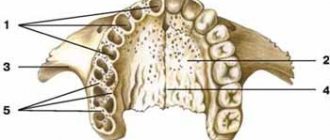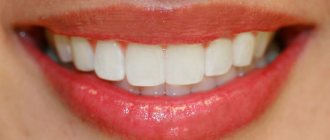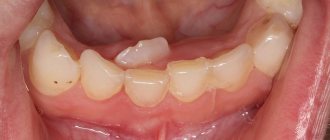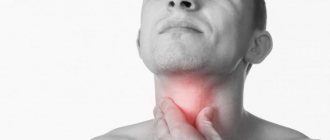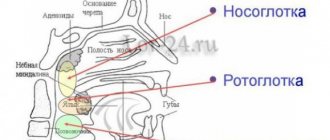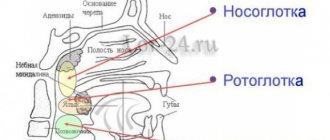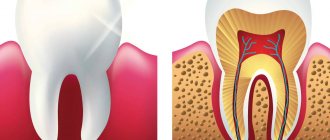The structure of the human jaw: teeth and their formula
When citing one number for any tooth, the dentist means its anatomical and functional affiliation. If you conditionally divide the dentition into two halves and start counting from the first incisor, you will get 8 teeth in each direction (top and bottom). The first incisor is a one. The second, accordingly, is a deuce. And so on until the last molar, which is called the figure eight. If the doctor says - bottom seven on the left, then we are talking about the bottom left second molar. As you can see, everything is very simple!
This can be expressed schematically as follows (permanent teeth):
For baby teeth, everything is the same, only the teeth are designated by Roman numerals (there are no premolars in the primary dentition):
As for the two-digit designations, they were invented in order to simplify the written recording of medical history. The above is preserved, but a number appears before the number indicating which jaw and on which side the tooth is located. Conventionally, the oral cavity is divided into segments - upper right (number 1), upper left (number 2), lower left (number 3), lower right (number 4). As you noticed, the report is conducted starting from the top right and clockwise. The segment is written first, and then the tooth number. For example, the third canine from the top right would be designated tooth 13. The lower incisor on the left is 32 teeth. In children, the segments are designated by numbers 5 to 8, so as not to confuse the primary bite with the permanent one. Let's take the same third fang on the right. In a child, it will be designated as tooth 53. And so on by analogy. The main thing is to always start the report from the right side at the top, then you won’t get confused. These are not snails with 25 thousand teeth! Can you imagine their dental formulas?
Anatomical structure of the tooth
We figured out the order of the teeth. Further - more interesting! After all, a tooth is a unique organ, designed by nature to perform very important functions, primarily chewing. To be firmly held in the jaw bone, you need a root. The longest root is at the canine. Teeth can be single-rooted or multi-rooted. The structure of the upper teeth (molars) is somewhat more complex than that of the lower ones, since they have 3 roots. There are especially many variations in the number and type of roots in “wisdom teeth.” But the visible part of the tooth protruding above the gum is called the crown. It has different shapes in the incisors, canines and molars to perform the functions of biting, crushing or chewing food. The boundary between the crown and the root is the neck of the tooth. It is usually not visible, but it can become exposed due to certain diseases (periodontal disease, etc.). An x-ray is a kind of photo of the structure of the tooth and will give you an idea of what the state of affairs is in the oral cavity.
Rules for maintaining dental health
To maintain dental health, you need
- You need to brush your teeth twice a day
, in the morning and in the evening
use dental floss to care for hard-to-reach areas
and irrigator
— say "no!"
bad habits - smoking and a lot of sweets
– visit the dentist for examination and professional hygiene twice a year
Professional teeth cleaning is available to everyone
Professional teeth cleaning is a service that is available in almost any dental clinic. The price is affordable for everyone. And after such a procedure you will feel like a million – a real star with a Hollywood smile. Some patients even say that their teeth feel lighter.
The procedure itself is completely painless if there is no caries or severe gum disease. It's comfortable. While the doctor is brushing your teeth, you can watch a movie (some dentists in Moscow provide this opportunity). For cleaning, special tools and products containing glycine are used. After cleaning, polish with a brush and a special paste. Rinse the mouth, apply a strengthening mask to the gums, check the gum pockets and that’s it, the procedure is completed.
If your gums require additional care, the doctor will prescribe appropriate procedures that you can do at home yourself.
There are many different effective oral care products. Your doctor will help you choose which ones are right for you.
It is good to use preparations containing tea tree oil.
Tea tree oil
is a unique natural product that effectively suppresses pathogenic microflora and various bacteria and viruses. Patients who use products with this oil usually have healthier teeth and gums.
Sometimes after a professional cleaning, the doctor may recommend or even prescribe an enamel testing procedure. It depends on the condition of the patient's teeth. If the enamel needs additional strengthening, special pastes are prescribed.
The rapid formation of plaque can be a sign of problems with the gastrointestinal tract. In this case, a saliva test is performed and a referral is made to a gastroenterologist.
You will also need special toothpastes for your teeth.
For patients who do not have serious problems with the condition of their teeth and gums, and patients undergoing orthodontic treatment or in the postoperative period, completely different dental care is prescribed. You also need to know about this.
Brushing your teeth, daily at home and professionally at the dentist, are equally necessary for your health!
Proper brushing of teeth allows you to remove constantly forming plaque and prevents the occurrence of dental diseases.
Let's talk about your main assistants in the fight against dental plaque.
Histological structure of the tooth
The special hardness of teeth is due to their structure. The outside of the crown is covered with enamel, the basis of which is hydroxyapatite crystals. 96% of the enamel consists of inorganic substances, which is why it is so hard (which, however, does not mean that experiments can be carried out on teeth, testing their strength). But dentin, which is located under the enamel, has much less inorganic substances - about 70%. It is softer, and therefore is destroyed by caries more than enamel. Inside the tooth there is a cavity filled with a neurovascular bundle, or pulp. The entire rich spectrum of pain during the deepening of the carious process is associated with it. In addition to nerve fibers, the pulp also contains a large number of blood vessels, through which infection from the affected tooth spreads throughout the body. This is why it is so dangerous to leave dental diseases untreated.
Types of crowns for front teeth
Metal crowns
They are created from metal alloys, including precious ones, by casting or stamping. The high strength of the metal ensures long service without the risk of cracks and chips. Gold crowns are easily shaped and reproduce the anatomical shape of the tooth in detail. Designs made from metal alloys are inexpensive (with the exception of crowns made of gold), comfortable, strong, durable, but do not resemble natural teeth, and therefore are not suitable for prosthetics in the smile area.
Metal ceramics
Metal-ceramic crowns for the front teeth are one of the popular prosthetic options due to their low cost (except for restorations made of gold, palladium, and platinum). They have a durable metal base, onto which a layer-by-layer ceramic mass is applied, identical in color to natural enamel. The one-piece casting method minimizes the risk of complications since there is no gap between the inside of the prosthesis and the support.
The cladding is carried out in layers - each subsequent layer is subjected to thermal treatment (baking) to achieve the highest adhesion of the metal to the ceramics. Manufacturing technology allows us to achieve a natural-looking prosthesis. But this aesthetics is not enough to make an incisor or canine look natural.
Living teeth are capable of reflecting, transmitting, and scattering light. The metal base does not have this property - when natural light hits the teeth, the difference between natural and artificial crowns is noticeable (the base shines through the coating). Another unsightly disadvantage is discoloration and receding gums around the base of the crown (gray neck). The reason is metal oxidation due to prolonged contact with the mucous membrane. Also among the main disadvantages are accelerated abrasion of the enamel of the antagonist tooth, chips of the ceramic veneer, and an allergy to metal.
The metal base of the metal-ceramic crown is slightly visible through the gums
Modern orthopedics offers a more aesthetic result - metal-ceramic crowns for the front teeth with shoulder mass. In such structures there is no exposed metal ledge - they are completely covered with ceramic cladding. The metal does not come into contact with the mucous membrane, which eliminates cyanosis of the gums around the prosthesis. But the manufacturing technology of such models is more complex, which affects the cost of restorations.
Ceramics
Ceramic crowns for the front teeth are made from dental porcelain by firing or casting. Due to the optical properties of the material, all-ceramic structures look identical to living teeth. They are biocompatible, do not stain, do not oxidize, and last 7-10 years
.
Porcelain dentures are light, thin, and do not require deep preparation of the supporting units. The disadvantages of such restorations include:
- higher cost than metal-ceramic structures;
- fragility of the material (under heavy load, porcelain cracks and crumbles);
- impossibility of bridge prosthetics.
If the crown part is severely damaged (if only the root remains), installing crowns on the front teeth involves the use of metal-free inlays or pins. Metal structures are not used, since they will shine through the ceramics and can crack the restoration. Solid ceramics are fixed only to your own tooth.
E-max ceramics
Today, metal-free solutions have come to the fore, developed in accordance with the latest advances in robotics. E-max glass ceramics based on lithium disilicate are free of all the disadvantages of dental porcelain and allow you to create beautiful, incredibly durable prosthetic systems. The manufacturer offers blanks of five different levels of transparency, which, when making a crown, ensures a smooth color transition from the gingival part to the cutting edge, achieving a natural restoration.
Advantages of glass ceramics:
- Leucide ceramics are very durable, wear-resistant, and suitable for restorations of frontal and chewing units. It recreates in detail the structure of natural enamel and relief.
- Depending on the manufacturing method, E-max crowns can be pressed (E-max PRESS) or milled (E-max CAD).
- 3D milling using CAD/CAM technology is automated, which allows you to create thin, light, durable restorations that cannot be distinguished from living teeth.
The only negative (and that is relative) is the cost. E-max frontal crowns are more expensive than metal-ceramics or porcelain analogues. But this disadvantage is compensated by high strength, natural appearance, inertia of restoration, and durability. Average service life – 15-20 years
. They are inferior in strength only to zirconium prosthetic systems.
Emax is used for single restorations, as part of bridges on the front 4 teeth. Pressed models are not used for bruxism. Excessive mechanical load can lead to damage to the restoration. In such situations, only milled structures are suitable.
Zirconium dioxide
Zirconium crowns for the front teeth are made automatically, by milling on a computer-controlled machine. Ultra-strong, bioinert, hypoallergenic material allows you to create thin, lightweight restorations for any part of the jaw. Products made using CAD\CAM technology up to 0.4 mm thick. This minimizes trauma to dental tissues during preparation. Thanks to optical properties close to natural enamel, a smooth exit of the crown from the gum is ensured - the color of the restoration is rich in the center, more transparent at the cutting edge.
The strength of zirconium restorations is superior to all others, including metal-ceramics, which allows them to be used in bridges of any length. Since zirconium has a snow-white tint, crowns for the frontal zone are made with ceramic veneering, providing the artificial tooth with a natural appearance. The exception is Prettau zirconium materials, which are painted with special liquid dyes, making it possible to avoid layer-by-layer application of ceramics.
The cost of prosthetics with zirconium is 1.5-2 times higher than with metal-ceramics. But the service life of zirconium restorations is 20-25 years or longer
, which compensates for the price.
Plastic dentures
Plastic crowns are placed on the front teeth as temporary, protective restorations. The patient wears them while permanent structures are being made. The advantages of plastic structures are ease of manufacture and low price. But such restorations have more disadvantages - allergies, inflammation of the gums, rapid loss of aesthetics (the prosthesis absorbs foreign odors, coloring pigments), fragility, short service life. Although the declared service life of plastic models is up to 2 years, after only 1-2 months
their aesthetic condition deteriorates significantly.
The structure of baby teeth
A temporary bite differs from a permanent bite not only in the number of teeth (in a temporary bite there are 20). Baby teeth have a bluish tint to the crown, which is also much wider than the root. Children have less enamel mineralization, so caries affects them very quickly, and the pulp takes up more space compared to permanent teeth. The canals of baby teeth are wider, easier to pass for instrumentation, and the roots themselves have a rounded shape. The structural features of baby teeth determine their rapid destruction in case of infection penetration and very severe pain in the child, so in childhood, visit the dentist in a timely manner.
Knowing the structure of teeth will help you quickly find a common language with the dentist and feel more confident when discussing treatment issues.
You will be able to better navigate the manipulations performed by the doctor and clarify all the points that interest you with an understanding of the essence of what is happening. This article is for informational purposes only, please consult your doctor for details!
